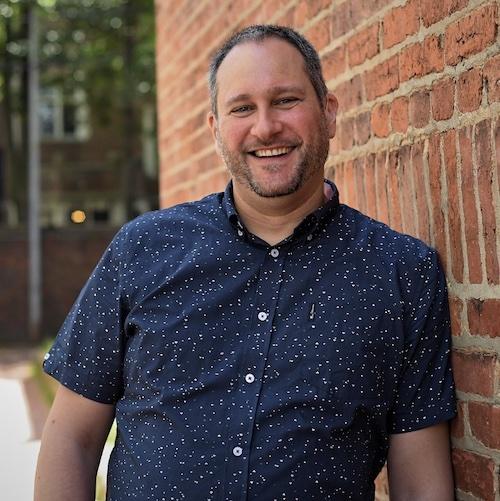Careers in the Arts Toolkit Artist Profile: Aaron Kubey

Photo by Grace Simoneau
Director of Artistic Sign Language / Performance Artist
Washington, DC
Aaron Kubey says he has three meaningful achievements in the arts: 1) being director of artistic sign language (DASL) at the John F. Kennedy Center for the Performing Arts and other theater companies, 2) being the first Deaf and youngest executive director/president of the National Theatre of the Deaf, and 3) being the first Deaf student to be accepted at and graduate from the DePaul Theatre School. In 2022, Kubey was the DASL of A Monster Calls and Dear Evan Hansen for Baltimore’s Hippodrome Theatre and the Kennedy Center. Additionally, he interpreted King George at the Kennedy Center in 2022.
In his current role as DASL, Kubey works to ensure that the sign language being used within a theater production is not only accurate in its translation, but matches well with the setting, tone, and other cultural factors of the play.
Kubey’s arts career began when he was a child, performing in school plays and talent shows before becoming part of a traveling theater variety show troupe in high school. “That built the path for my career in theater, TV, and film over the past 30+ years,” he said. In 2019 alone, he worked as the DASL for the Kennedy Center’s production of Dear Evan Hansen, a musical in which a misfit teenager makes his way into a grieving family’s life through lies and deceit. In an interview with the Washington Post, Kubey stated, “My style of being a DASL is I tell them, ‘Just imagine you’re Jackson Pollock and I’m a white canvas’… Do what feels right, throw everything at me. I want them to be as creative as they can be.”
Kubey has always been an activist, advocating for the Deaf and Hard-of-Hearing community in all his past and current roles. In an interview with the Alliance for Inclusion in the Arts, he talked about the increase in inclusion of the Deaf community in media but the requirement that they still speak. “While I applaud the fact that more roles are being created for these actors, I am a bit disappointed in the attitudes and opportunities for them,” he said. “It appears that the roles that are being created for Deaf and Hard-of-Hearing actors still require them to speak and sign rather than naturally using ASL. If you look back at recent roles performed by Deaf actors, you’ll find the majority of them spoke at times while signing. There are some Deaf actors who can speak clearly, but generally, by making Deaf actors speak, you remove them from their natural comfort zone, which is signing.”
Kubey credits being Deaf with much of his creative ability. “My deafness allowed me to be creative in how to express myself and my characters in other ways than the spoken language,” he said. “It’s taught me how to maximize using my facial expressions, body language, gestures, etc.” In addition, he credits the interpreters who have supported him when needed and his good fortune of being able to work with others who know ASL.
Kubey’s advice to aspiring artists with disabilities: “Own your space in the arts, be proud of who you are, don’t allow your disability to prevent you from pursuing your dream and passion, and NEVER take ‘no’ for an answer. Use that ‘no’ as motivation to prove your naysayers wrong and as a teaching moment for them to see you are fully capable of accomplishing your dreams.”

